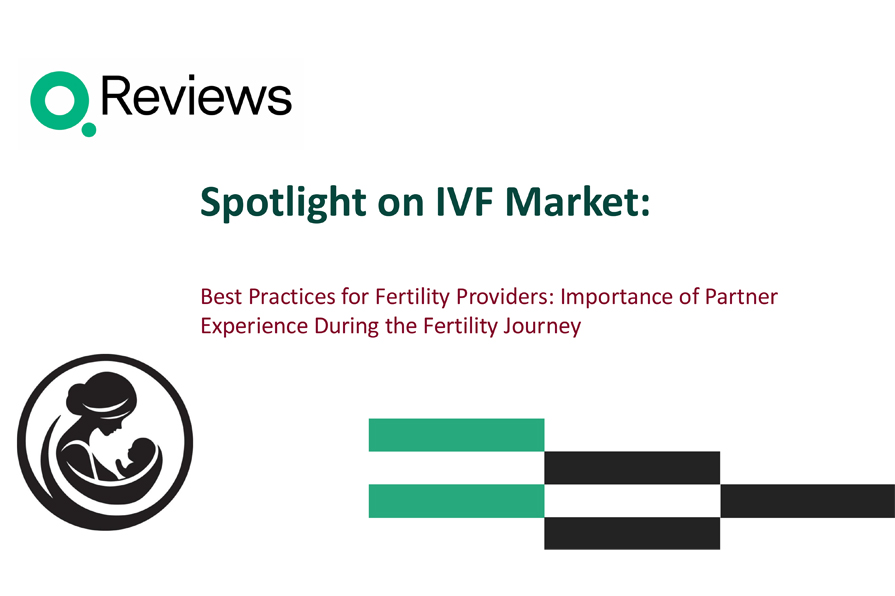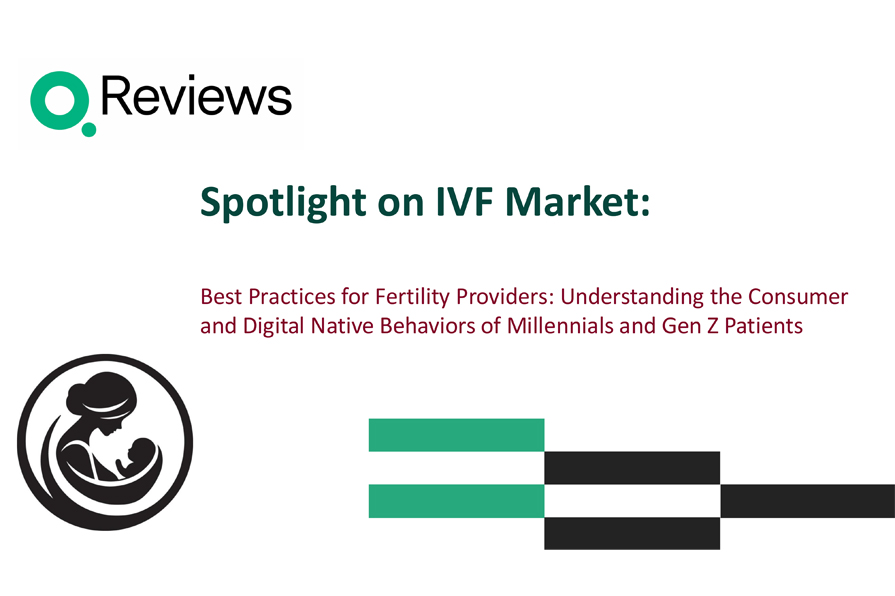
How Texting Can Help You Enhance the Patient Experience

In recent years, healthcare organizations’ biggest challenges have remained largely the same: decreased profit margins, staffing shortages, and higher patient volume. With fewer resources and decreasing ROI, healthcare organizations must increasingly work smarter, not harder, to enhance the patient experience.
Senior leaders know that technology can help them address those needs. In a 2024 McKinsey survey, 90% of health system executives said digital transformation was a top priority — yet just 75% said they were delivering on it.
This clearly isn’t due to a lack of will, though. Rather, most health leaders simply don’t know where to start. With an influx of new tools — chatbots, AI-powered diagnosers, health tracking apps — it’s no wonder healthcare executives are feeling overwhelmed. But one of the most valuable, cost-effective, and simple-to-implement tools consistently gets overlooked: texting.
Below, we’ll discuss why texting is an essential component of patient communication, where it fits into the care journey, how it can enhance the patient experience, and more.
The Case for Texting in Healthcare
While healthcare organizations can make any number of financial, clinical, and operational improvements, they likely won’t be effective without patient engagement. Of course, there are various ways to engage with patients — but not all of them are equally effective.
Let’s take a look at some of the most commonly used engagement channels in healthcare:
Phone
Healthcare organizations have been communicating with patients on the phone for decades now, and there’s good reason to do so.
For one, it offers a more customized experience. Patients receive detailed information and can ask questions as they arise. It also offers a personal touch — there’s something about speaking with someone that makes it feel like they really care. And with a 52% engagement rate, it’s undoubtedly effective.
But phone calls aren’t without their drawbacks. Demand has largely been static — and given Millennials’ and Gen Z’s notorious distaste for phone calls, it could very well fall in years to come. There’s also a low hit rate, with many people missing phone calls (or even intentionally ignoring them). And with staff shortages, healthcare organizations simply aren’t able to call every patient.
While email engagement is cost-effective and convenient, it hit a point of diminishing returns years ago. Yes, nearly everyone has an email address — but they also likely have thousands of unread emails. When people are already inundated in emails, you’re fighting for patients’ attention along with every other person and company in their inbox.
It may come as no surprise, then, that the click-through rate for email in healthcare is less than 5%. Suffice it to say, email isn’t the most effective channel to enhance the patient experience.
App
Apps are picking up steam in the marketplace, and they certainly have some advantages. Many EHRs already offer apps that directly allow patients to book appointments, make payments, and view services from within them. Millennials and younger generations, who make up an increasing share of patient populations, use apps every day and have come to expect them from payers and providers.
Yet engagement rates for apps only hover around 30% to 40%. Most apps are little more than patient portals sized down for a mobile screen, which is far from user-friendly. If an app isn’t optimized for a mobile experience, there’s little incentive to engage with it.
Related: EHR Optimization: The Benefits of Having Digital Solutions on Top of Your EHR
Text
Texting, on the other hand, is the utility player of patient engagement channels. A full 97% of Americans own a cell phone, even among elderly and indigent populations. What’s more, texting creates an on-demand experience with no need to download anything. With engagement ranging between 82% and 90%, texting has the highest engagement rate of all channels by a long shot.
That’s not to say texting is foolproof. Some patients are hesitant to receive texts after having been bombarded with them in the past. We also don’t want to suggest that you shouldn’t use phone, email, or apps as part of your patient engagement strategy. Different people have different preferences, so an omnichannel approach is always smart.
But with limited resources, it’s important to prioritize which channels you invest in most heavily. Time and again, texting has proven to be the preferred channel among patients. A Journal of the American Medical Association study has even confirmed that texting increases care plan adherence.
And if you do it the right way, you can boost engagement and revenue, improve health outcomes, and enhance the patient experience.
Boosting Engagement With Rich SMS Texting
So, what exactly is the “right” way to text? We’ll start by talking about what it’s not.
Simple text notifications about appointments and medications can only be so helpful. If people receive a constant stream of repetitive text messages, they’ll come to view them as spam and stop engaging.
You may also want to avoid MMS — messages that directly include files like images, PDFs, or videos — as it can lead to HIPAA compliance issues. That’s not to say you can’t guide patients toward content like that, though.
SMS text messages with links — aka rich SMS texts — are both engaging and secure. With these kinds of texts, you can connect patients with relevant resources, check in with them after post-acute care, and remotely monitor high-risk patients. In essence, you get the app experience without making patients have to download apps.
4 Ways Texting Can Help You Enhance the Patient Experience
Let’s get even more specific about how you can use rich SMS texting throughout the patient care journey to enhance the patient experience:
Discovering Care
Providers need to be prepared for inbound interest from prospective patients. Things like an SEO-optimized webpage, chatbots, well-managed Google reviews, FAQ sections, and online scheduling can all help you convert those interested prospects into patients. But it’s important to have an outbound strategy as well.
With so many different providers out there, you can’t rely solely on patients coming to you. To cut through the noise, you need to reach out to them. Beyond simply raising awareness through ads, most providers have an enormous opportunity to activate dormant patients. Since these patients are already familiar with you, they’re more likely to engage with your services again.
Take the example of Bo, a 50-year-old patient who only comes in once a year for his annual checkup. His primary care doctor has recommended that he get a colonoscopy for several years now, but he hasn’t done it yet.
In this case, you could create a targeted texting drip campaign with Q Reach that shares links to:
- An infographic on the efficacy of colonoscopies in reducing colorectal cancer
- A colorectal cancer risk assessment quiz
- A colonoscopy patient testimonial video
Over time, you can refine your strategy. After seeing what Bo engages with, you can send more of what resonates with him and less of what doesn’t.
Resources that educate patients don’t just remind them — they can help persuade them. This increases the odds of them taking action, which is good for patients’ health and good for your business.
Pre-Arrival
All providers know what a struggle it can be to get patients in the door, on time, and up to speed.
Missed appointments have a significant financial impact on healthcare organizations. The National Institute of Health (NIH) found that missed appointments cost the US healthcare system more than $150 billion each year. Meanwhile, late arrivals can throw off your scheduling, as can patients who arrive unprepared (think: patients who eat breakfast before their scheduled surgery).
Text reminders are much more likely to reach patients than emails, phone calls, or app notifications. And the more likely they are to see a reminder, the more likely they are to show up — otherwise, it’s out of sight and out of mind.
Texts are also great for sharing links to instructional resources. Avoid traditional dense PDFs — patients who encounter walls of text will likely only superficially skim your instructions or not read them at all. Instead, consider pre-arrival checklists or instructional videos.
You can even send texts asking patients whether they followed certain instructions, like arranging a ride home after a procedure where they’ll receive anesthesia. If they respond that they haven’t, you can direct them toward a link to reschedule.
And by automating these texts, you can scale your delivery — reaching many different patients at once rather than having staff members chase them down individually.
Site of Care
While we’re on the topic of staff overload, it’s worth mentioning how demanding on-site care delivery is — not just on an emotional level, but a physical level too. Studies have shown that nurses walk between three and five miles per shift on average.
While dedicated nurses are more than willing to go the extra mile for their patients, there are ways to lighten their load. Nurses are typically the primary point of contact for patients, no matter the subject. Whether it’s a simple request for an extra blanket or something more serious, like reporting a side effect, all patient communication tends to go through nurses first.
Texting creates an opportunity to deflect some of these tasks, redirect them toward the appropriate teams, and avoid additions to nurses’ already busy workloads. While texting is no replacement for rounding, you can use it to address less urgent concerns and needs.
You might, for example, use Q Visit to set up an automated text flow linking to a survey on room temperature and cleanliness. Responses to those surveys can be directly routed to the facilities management team who can adjust the temperature, send a custodian to mop the floor, and take care of other minor requests. You could also share links to meal options and order forms, and then have those responses go right to the food services team.
The more nonclinical tasks you can deflect, the more time nurses have to provide essential clinical care. In turn, this can improve nurse job satisfaction, reduce staff burnout and attrition, enhance the patient experience, and improve health outcomes.
Post-Acute Care
Of course, the care journey doesn’t end once a patient leaves an acute care site. Whether they go to a skilled nursing facility, an inpatient rehabilitation facility, or right back home, patients must be set up for a successful transition in both the short and long term.
Care coordination during this stage is usually manual and time-consuming, with healthcare workers calling each patient individually. While these calls are essential for high-risk patients, many low-risk patients can be supported through remote patient monitoring. Take, for example, people with chronic conditions that don’t require immediate care.
An academic medical center in New York that partners with Q Reviews has been using Q @ Home to remotely monitor a group of 9/11 responders who developed chronic conditions. Once a month, they share links to educational resources and a checklist to ensure patients are adhering to their care plan and don’t require acute intervention.
They’ve seen an 82% engagement rate, and their staff reports that patients are more informed. They even saw a statistically significant improvement in the patients’ dietary health. Now, their care coordination staff has more time to dedicate to patients who need the most support.
You could also use texting to prompt post-op patients to share photos of their wounds after surgery, or send a weekly reminder to diabetic patients to record their blood sugar levels, weight, diet, and exercise. Care coordinators can keep tabs on these responses to ensure that patients’ conditions don’t worsen — or get them the care they need if they do.
Embracing Texting as Part of Your Digital Strategy
With mobile phones becoming so integral to our daily lives, texting presents a huge — and fairly low-lift — opportunity for healthcare organizations to enhance the patient experience. Pair that high-engagement channel with rich content, and you have a recipe for increased patient engagement.
And keep in mind that texting doesn’t have to (and shouldn’t!) be the be-all, end-all of patient communications. Phone calls, emails, apps, and even physical mail all have their place in the patient care cycle, and texting can often integrate into those ecosystems.
The four texting strategies we mentioned above are just a few of the many ways healthcare organizations can incorporate texting. As you consider the patient journey at your own facilities, you’re sure to find more ways texting can be an asset for patients, practitioners, and administrators alike.








